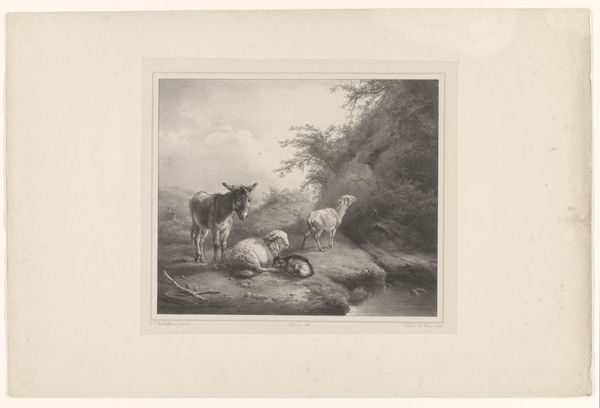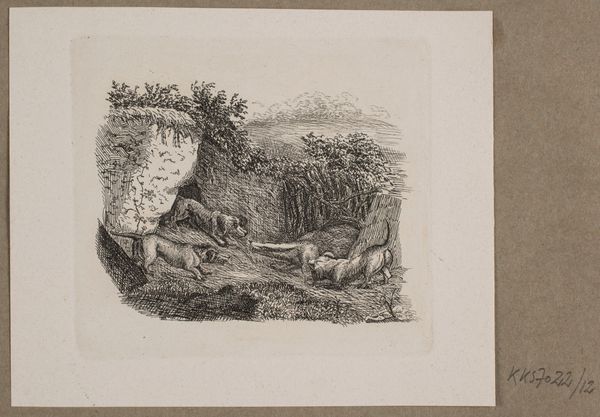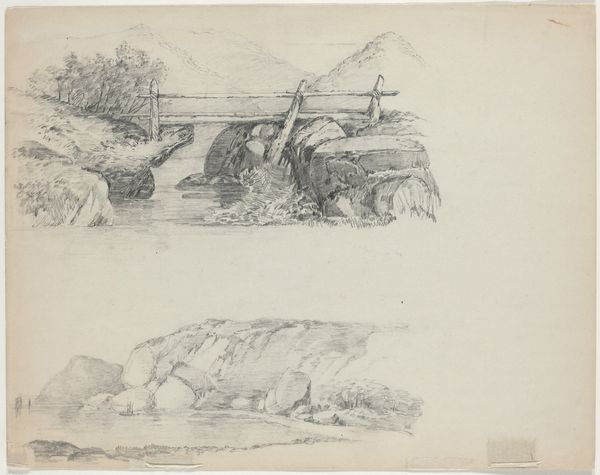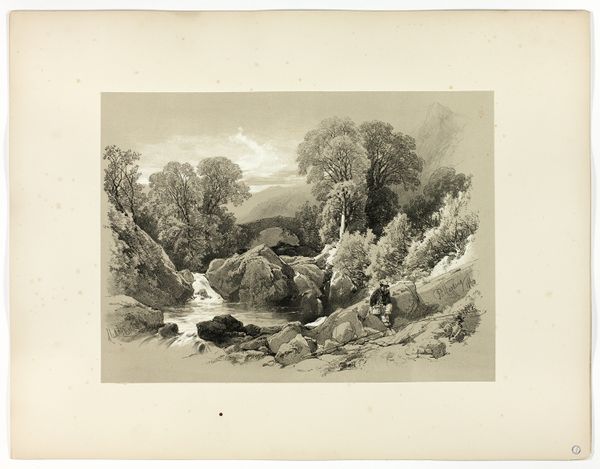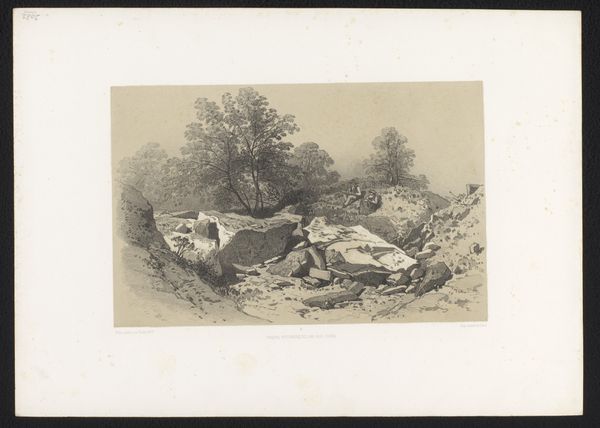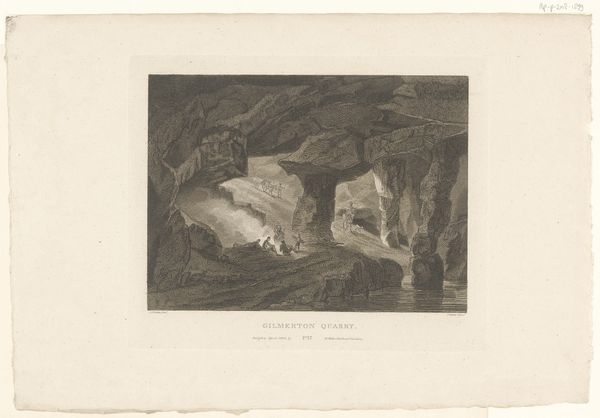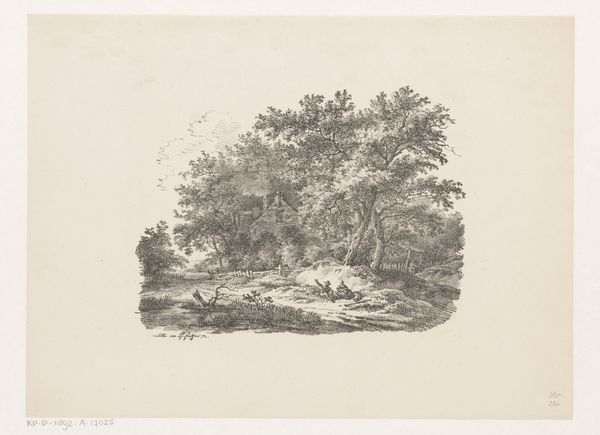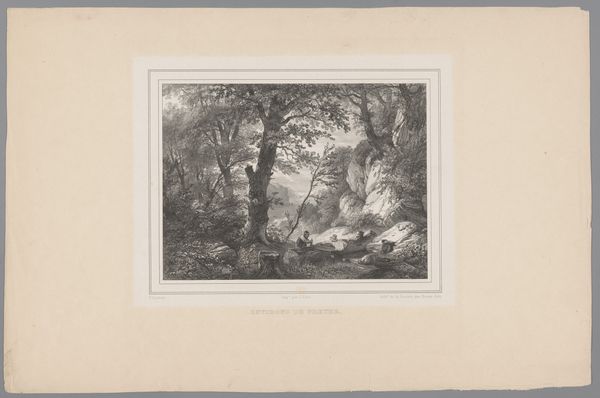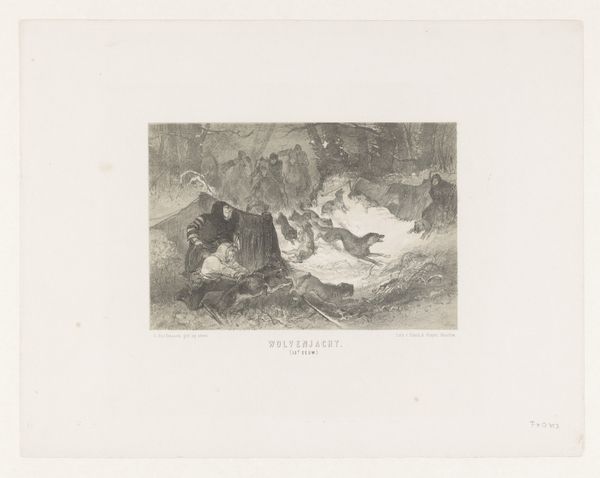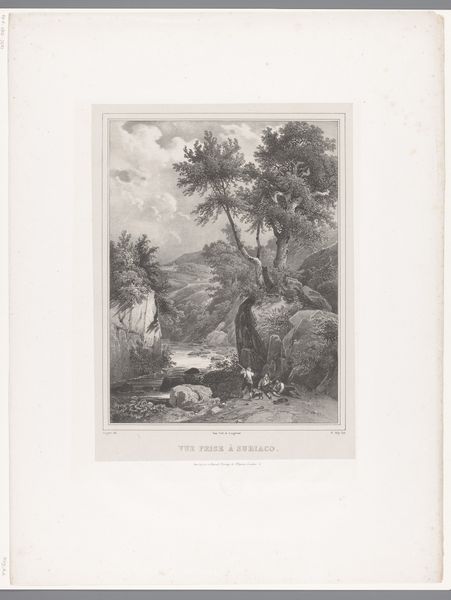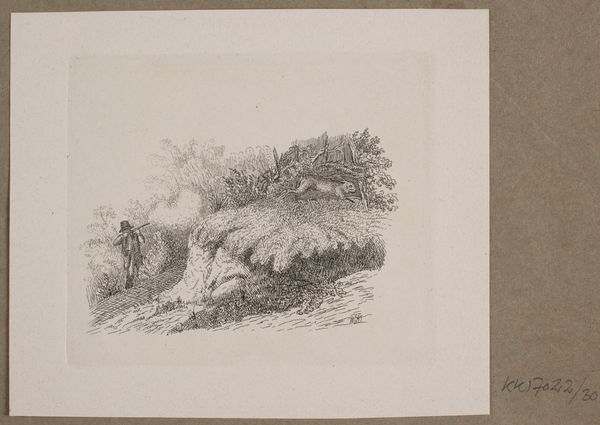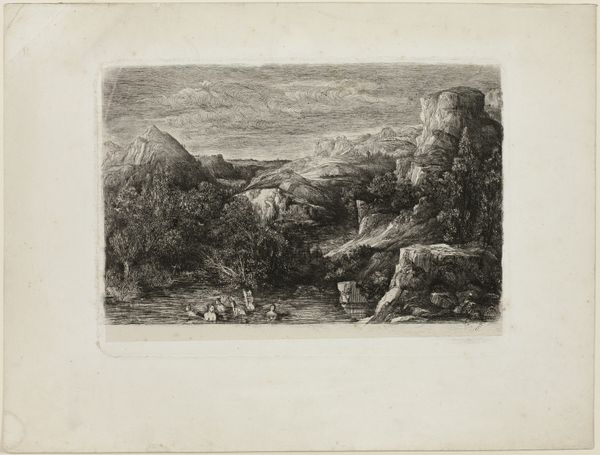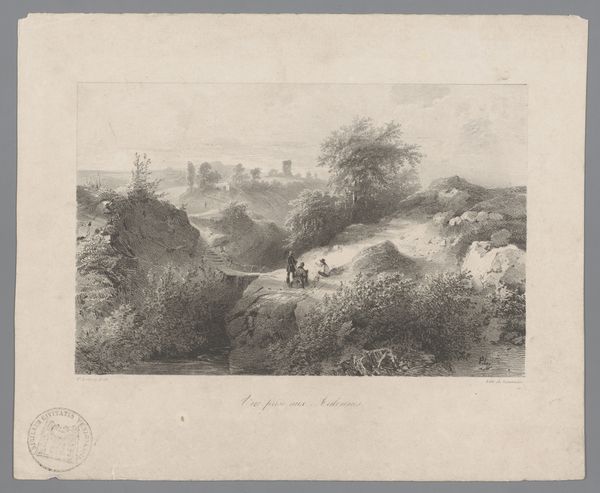
drawing, pencil
#
portrait
#
drawing
#
pencil sketch
#
dog
#
old engraving style
#
landscape
#
pencil drawing
#
romanticism
#
pencil
#
realism
Dimensions: height 354 mm, width 478 mm
Copyright: Rijks Museum: Open Domain
Editor: So, this is “Resting Dog by the Water's Edge” by Jacques Raymond Brascassat, created in 1832 using pencil. It's quite detailed! I immediately notice how the dog and the landscape behind it seem equally important. What do you see in this piece? Curator: I see a potent blend of domesticity and the sublime. Brascassat isn't merely portraying a dog; he’s embedding it within a Romantic vision of nature. Consider how the dog’s reflection doubles its presence, almost a symbolic mirroring of humanity within nature, seeking self-recognition in its depths. What feelings does the dog's pose evoke for you? Editor: Mostly a feeling of peace, maybe even melancholy. The dog looks tired, but also content in its surroundings. Is that reflection just about the dog seeing itself, or something more? Curator: The reflection acts as more than just a visual echo; it serves as a profound visual metaphor for self-awareness. It subtly evokes the Ancient Greek myth of Narcissus. Moreover, in the Romantic era, animals often represented uncorrupted innocence and a deeper connection to the natural world, which was increasingly being lost with industrialisation. This image captures a nostalgic longing for that connection. What sort of cultural memory do you feel comes through? Editor: I see that! I guess it speaks to the desire for a simpler, more natural life that people might have been feeling even back then, like a memory of a time when things were less complicated. That’s pretty deep for a dog drawing! Curator: Indeed. And by rendering the dog with such tenderness within this landscape, Brascassat allows us access to those enduring, universal longings. I never thought I'd find such philosophical depth in something that at first glance, seems so simple.
Comments
No comments
Be the first to comment and join the conversation on the ultimate creative platform.
